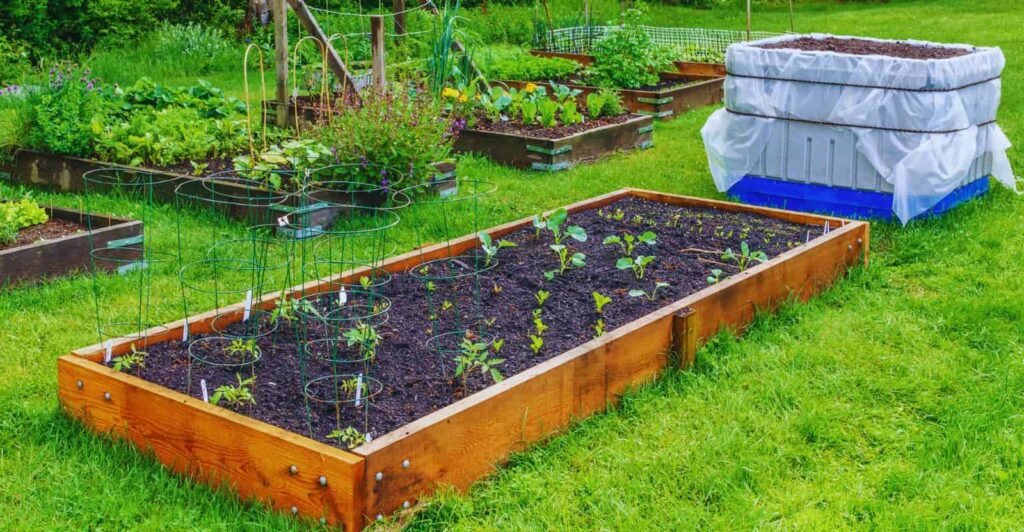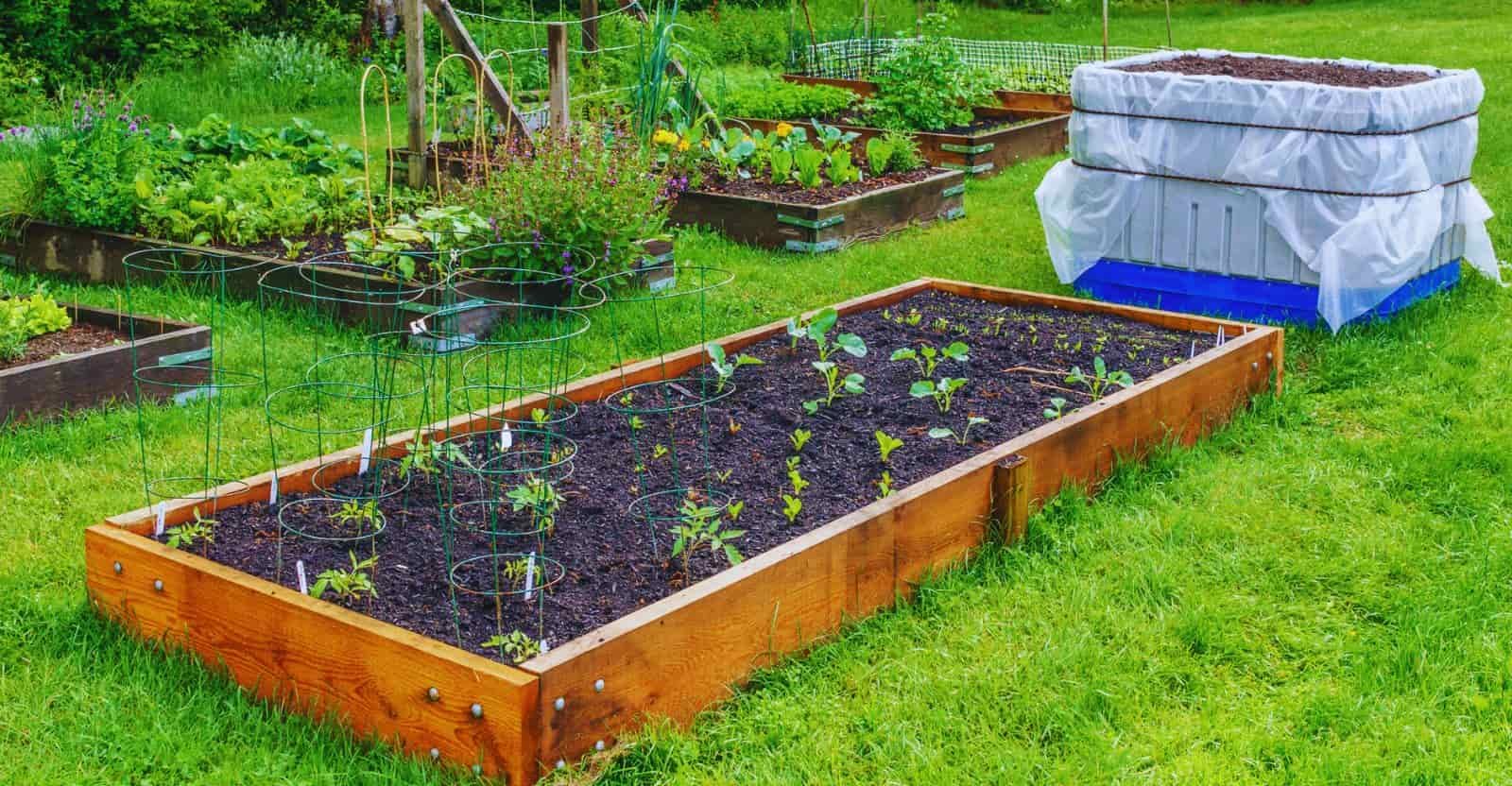
When setting up a new raised garden bed, it’s important to make sure you’re doing it right, especially when using wooden planters. A good planter liner can make a big difference in how long your garden bed lasts and how well your plants thrive. The right liner can also help keep pests away, maintain consistent moisture levels, and give your garden a more polished look. Luckily, installing and using a liner is simple once you know which materials to choose.
If you want your wooden planter box to stand the test of time without limiting what you can grow, we’ve answered the most common questions to help guide you.
Let’s dive into the basics.
Table of Contents
- Should you line a wooden planter?
- How do you prevent wooden planters from rotting?
- What’s the best way to line a wooden planter?
- Plastic planter liner
- Flexible rubber membrane liner
- Metal liner
- Fiberglass liner
- Is it safe to paint a wooden planter box that already has plants in it?
- Conclusion
Should You Line a Wooden Planter?
Lining a wooden planter can be very beneficial, but there are times when it might not be necessary. The primary reason for using a liner is to protect the wood from rot and to stop any harmful chemicals from leaching into the soil, especially if the wood is treated. A liner also helps prevent moisture and fungi from reaching the wood, which can extend the life of your planter.
Here are some things to consider when deciding whether or not to line your planter:
You may not need a liner if:
- Your planters are small and easy to clean after a season.
- You’re not growing edible plants like vegetables or fruits.
- You plan to change the potting mix regularly, especially for short-season plants.
- The planter is made of naturally rot-resistant wood like redwood or cedar.
You should line your planter if:
- You have a large commercial wood planter that’s at a higher risk of rotting, especially if it’s built with iron nails that may rust.
- There’s poor air circulation in your planter, causing compacted soil that’s hard to manage.
- You want to avoid the hassle of cleaning and drying out your planter every season.
- You’re growing plants that are prone to fungal issues that could spread to the wood.
- Your planter is painted with lead-based paint. Lead can leach into the soil and harm your plants, especially edible ones.
How Do You Keep Wooden Planters from Rotting?
To avoid wood rot in your planters, the best thing you can do is line them with high-quality materials. A good liner will keep moisture and fungi away from the wood, helping your planter last much longer. Here are some tips to keep your wooden planter in great shape:
- Use a durable liner: Choose a liner that suits your needs in terms of longevity, ease of installation, and custom fit.
- Ensure proper soil compaction: Loosely compacting the soil helps improve air circulation, which encourages healthy plant growth and prevents rot.
- Don’t overfill the planter: Leave a couple of inches of space below the liner to allow for drainage.
- Clean the planter annually: Remove the soil and wipe down areas with commercial sealers to minimize moisture buildup and prevent wood rot.
- Use chlorine bleach: Clean out any soil and plant debris from the sides and use bleach to kill pests like termites or fungi.
- Make sure your planter has drainage holes: Proper drainage is key. Too much water can cause the roots to rot. You can easily drill a few holes for excess water to escape.
- Use specialized soil: Potting soil made for pressure-treated wood planters includes ingredients like vermiculite and peat moss, which help with water retention and reduce the chance of wood rot.
What’s the Best Way to Line a Wooden Planter?
There are a few ways you can line a planter, but the two most common methods are using landscape fabric or cutting a plastic liner to fit. Whatever material you choose, make sure that water can drain out of the bottom.
Your liner should go up at least an inch on the sides of the planter and be about two to three inches deep to ensure proper drainage and prevent root rot.
Here are some liner materials to consider:
Plastic Planter Liner
Plastic is a cheap and easy-to-find option for lining your planter. It’s available in different thicknesses, with thicker plastic (around six millimeters or more) being more durable.
For a DIY plastic liner, you can repurpose things like black plastic garbage bags or drop sheets. If you want to keep the wood visible for decoration, opt for a transparent plastic liner. Simply wrap it around the planter and cut it to the right size, securing it in place.
Flexible Rubber Membrane Liner
Rubber liners are a little pricier than plastic, but they’re easy to install and very flexible. You can cut them to fit any planter shape without special tools. Rubber liners are best installed on warm, sunny days when they’re soft and pliable. Once in place, you can staple or clip them to the wood to keep them from shifting.
If you have the budget, self-adhesive rubber liners are a great option since they stay securely in place and prevent water leakage.
Metal Liner
For larger planters, a metal liner like copper or galvanized steel is a solid choice. These materials are tough and durable, able to handle heavy soil without cracking. Copper doesn’t rust, and it’s relatively easy to install since you can bend it without it breaking. However, copper is more expensive than other options. Galvanized steel is a good alternative that’s rust-resistant and a bit cheaper, though it can be more difficult to install.
Make sure you measure your planter correctly before ordering your metal liner to ensure a good fit.
Fiberglass Liner
Fiberglass liners are strong and long-lasting, perfect for protecting your plants and preventing rot. However, they’re more fragile than other materials and can break easily. Fiberglass is best used on custom planters that already have fiberglass lining. These liners are usually expensive and tricky to install, so they’re not ideal for beginners.
Is It Safe to Paint a Wooden Planter Box with Plants Already Planted in It?
You can safely paint your wooden planter even if it already has plants in it, as long as you use the right type of paint. The key is to avoid paints that contain harmful chemicals like lead.
Water-based paints are usually safe for planters, but keep in mind that they don’t always stick well to the wood and might need to be reapplied more frequently.
Conclusion
As you can see, there are several options for lining your wooden planter, each with its own set of benefits and drawbacks. To choose the best one, consider the size of your planter and the types of plants you plan to grow.
You might also want to look into planters made from woods that are naturally resistant to rot, like cedar, which might already have a waterproof coating to help protect your plants and your investment.

